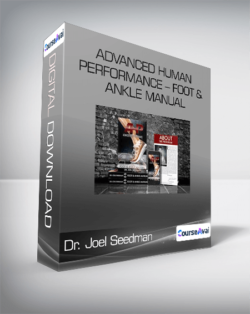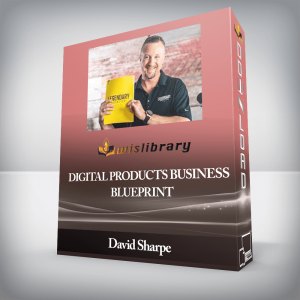Full DayAs budgets shrink and those with a wound present more challenging comorbidities, we can sharpen our practices in order to prevent or heal wounds more effectively. Join us as we explore the tools needed to navigate that minefield. Busy clinicians often don’t have time to view the latest guidelines and science, so this information will be presented in a way that makes it easy to incorporate into your practice.Purchase Skin & Wound Care – Joan Junkin courses at here with PRICE $199.99 $85All of the essentials necessary for state-of-the-art care for your patients including:Types of WoundsInfection ControlMethods of HealingNon-Healing WoundsAcute & Chronic WoundsBest Use of Wound ProductsAs budgets shrink and those with a wound present more challenging comorbidities, we can sharpen our practices in order to prevent or heal wounds more effectively. Join us as we explore the tools needed to navigate that minefield. Busy clinicians often don’t have time to view the latest guidelines and science, so this information will be presented in a way that makes it easy to incorporate into your practice. Joan Junkin is passionate about skin health and wound healing, but also recognizes that caregivers need endorphins as much as patients do. Therefore, you can expect occasional doses of humor to sweeten the day, along with the best interventions, devices and modalities available.We’ll focus on methods proven to prevent or speed healing for the especially challenging diabetic foot ulcers, pressure ulcers, those related to lower extremity edema and vascular ulcers. Joan provides a fresh perspective to help with the ever difficult patient education and motivation. A big emphasis will be placed on infection control methods. This seminar is your one-stop shop for essentials to improve your wound prevention and treatment knowledge and skills.If we want a better outcome for wound healing, we must change our practice! Join us as we learn to base our practice on the evidence that is available.OUTLINEKeeping skin in balance: adding that ‘ounce of prevention’Moisture, oil, bacteria, and acid balance – review of epidermal and dermal differencesSkin – first line of defense; how our skin manages to protect us and how we can help it succeedPreventing traumatic skin injurySkin tears, abrasions, tape burnsSimple methods of reducing friction between skin and other surfacesIncontinence associated dermatitisPrevention and treatment – evidence-informed international guidelinesFrequent incontinence needs high intensity preventionAcidic skin cleanser and protectant necessaryIncontinence cloths can reduce friction, have acidic cleansers and built-in protectantsUnder pads/protective garmentsAccurately assessing the buttocks – pressure ulcers vs other common buttock ulcersLocation, shape, color, depthCase studies using a systematic assessment methodFecal incontinenceSteps to improve stool consistencyCollection devices pros and consFungal rashesOptions of what to use and when to treat fungusNatural ways to control and prevent re-infectionWound healing essentialsPhases of healing a full-thickness ulcerWound assessment techniquesTeam approach to wound healing, including the patient/familyMaking use of nutrition and endorphins to speed healingWound bed preparation to assure best possible healingBest cleansing – takes more than salineAggressive antiseptic cleansersBiofilm – invisible shield for bacteriaGentle and effective antiseptic wound cleansersDebridement of non-viable tissues – an important part of infection controlCompare methods – each has pros and consDiscuss new soft pad for mechanical debridement (breaks biofilm too)Dressings help with moisture and bacterial balance in woundsMany antiseptic dressings available – new category is germ trapsSuper-absorbent options – not just foam and alginate any moreHow to choose a dressing based on wound characteristicsHow to decrease costs using products included on your buying contractModalities – physical science can be used to speed healingSurgical woundsKeeping incisions clean and dry to decrease dehiscence and infectionNegative pressure wound therapy bedside and single patient use modelsPressure Ulcers – 2014 international guidelinesIdentify risks – how to interveneTools to use and prevention optionsPressure mapping and therapists who specialize in fitting for optimal cushionFoam mattresses, air mattresses, chair cushions, foot protection boots – what options may be best for your facility’s situation/budgetDiabetic foot ulcersDepression, vitamin D deficiency, neuropathy – how limbs and lives are lostOff-loading methodsUtilizing written contractsAdvanced therapies – skin grafts, hyperbarics, autologous platelet concentrateArterial ulcersComparison of diagnostic methodsRe-vascularize if possibleKeep dry if not able to restore the flowEdema related ulcersCompression and elevation – tips to help them succeedInfection control methods to prevent frequent stasis dermatitis and infectionsManaging fibrin slough without causing trauma to legsLipedema and lymphedemaAssessment tipsLymphedema therapyTake home toolkit – helpful resources and how you can implement what you learned today at work tomorrow!OBJECTIVESDemonstrate and discuss strategies to minimize damage to high risk skin.Differentiate between skin care products and optimal use of options available.Identify and distinguish factors likely to stall wound healing.Analyze leg and foot wound characteristics of: neuropathic, arterial, and venous wounds.Identify characteristics of 6 categories of wound dressings.Compare and contrast 5 types of wound debridement.Outline goals for wound care in hospice and palliative care settings.Explain evidence-based pressure ulcer prevention practices and tools.Tag: Skin & Wound Care – Joan Junkin Review. Skin & Wound Care – Joan Junkin download. Skin & Wound Care – Joan Junkin discount. Purchase Skin & Wound Care – Joan Junkin courses at here with PRICE $199.99 $85





